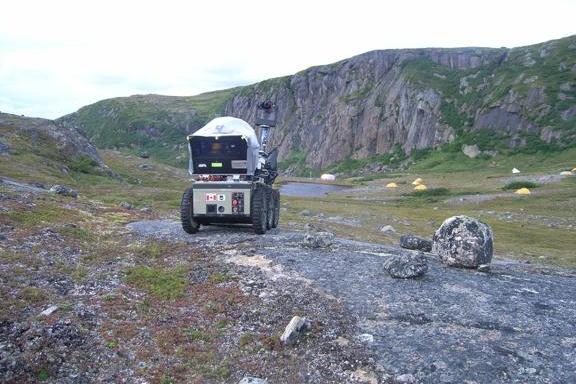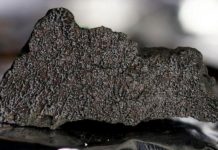
Sept. 20 (UPI) -- Researchers have discovered evidence of an ancient meteorite impact, a collision scientists say is responsible for the highest temperature recorded on Earth's surface -- 2,370 degrees Celsius, or 4,298 degrees Fahrenheit.
The impact site, Mistastin Lake crater in Labrador Canada, stretches more than 17 miles across. The significant depression was created when a large meteor struck bedrock some 38 million years ago.
Aside from the topographical imprint, impacts leave little evidence of their existence behind. Both the meteor and the impacted bedrock are mostly vaporized by the collision.
At Mistastin Lake, a few rock fragments survived the crash. One of them was picked up in 2011 by Michael Zanetti, now a post-doctoral researcher in earth sciences at Western University in Ontario. At the time, Zanetti was working with NASA scientists on a mock moon mission funded by the Canadian Space Agency.
The rocks and topography of Mistastin Lake crater recalls the lunar surface, so researchers were testing lunar equipment and unmanned rovers at the impact site.
The rock picked up by Zanetti eventually made its way into the hands of Nicholas Timms, a geologist at Curtin University in Perth, Australia. Timms specializes in the analysis of zircon grains inside impact rocks.
"Mike collected a rock from the top of a thick outcrop of impact melt rock known as Discovery Hill," Timms told UPI. "He thought that it looked odd -- glassy and shiny compared to other rocks he'd seen there."
"I had been researching the various effects of impacts on zircon from around the world and the Apollo mission lunar samples," Timms added. "We got chatting, and agreed to collaborate."
Zircon is prized by geologists and planetary scientists because it is extremely hardy. It doesn't break or melt. But the zircon Timms and Zanetti found in the middle of the peculiar rock collected from Mistastin Lake looked different than other zircon crystals. The grains were surrounded by a muddy brown layer.
Colleagues of Timms suggested the strange layer was evidence of decomposition. While zircon doesn't melt, it can be broken down into zirconia and silica at extremely high temperatures.
A survey of the rock's insides using an electron microscope revealed the zircon grains were surrounded by cubic zirconia, evidence the rock was heated to temperatures greater than 4,298 degrees Fahrenheit -- a record.
Timms and his colleagues detailed the evidence of the new record in the journal Earth and Planetary Science Letters.
The findings could have implications for a variety of other studies. Timms' method of measuring the transformation of zircon could be used to reexamine melt rocks known impact sites.
"We hope that we have highlighted a useful new tool for the geologists' toolbox," Timms said. "There is no reason to think that this phenomenon is unique to the Mistastin Lake impact structure. One might predict that similar observations can be made in other impact craters. Perhaps it is time to look again elsewhere with fresh eyes."
In addition to aiding the study of impact melt rocks from Earth, the moon, Mars and meteorites, the latest research could offer new insights into the geologic effects of lightening strikes or nuclear explosions.






